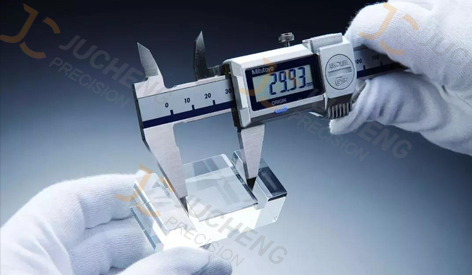ㆍPrivacy: We respect your privacy. Here you can find an example of a non-disclosure agreement. By submitting this form, you agree to our terms & conditions and privacy policy.
Views: 8 Author: Site Editor Publish Time: 2024-04-12 Origin: Site









Introduction
Plastic molding has revolutionized modern manufacturing, offering unparalleled versatility and efficiency. At the heart of this process lies the concept of tolerances – critical dimensions that dictate the precision and quality of molded plastic parts. This technical SEO article delves deep into the characteristics, cooling strategies, and pressure considerations that define plastic molding tolerances.
Dimension 1: Understanding Tolerances
Tolerances in plastic molding refer to the allowable deviation from the nominal dimensions specified in the design. These tolerances encompass various factors, including part geometry, material properties, and molding techniques.
Dimension 2: Factors Influencing Tolerances
Several factors impact plastic molding tolerances:
Material Selection: Different plastics exhibit varying shrinkage rates, affecting final part dimensions.
Part Complexity: Intricate geometries may require tighter tolerances to maintain functionality.
Molding Process: Injection molding, compression molding, and extrusion molding have distinct tolerance capabilities.
Tooling Quality: High-precision molds reduce dimensional variations in molded parts.
Dimension 3: Cooling Strategies
Effective cooling is crucial in achieving precise plastic molding tolerances. Rapid cooling minimizes part warping and shrinkage, ensuring dimensional accuracy. Techniques like conformal cooling, where cooling channels conform to part geometry, optimize cooling rates and reduce cycle times.
Dimension 4: Pressure Control
Maintaining optimal pressure during the molding process is paramount. Excessive pressure can lead to part distortion, while insufficient pressure may result in incomplete filling or voids. Advanced molding machines employ precise pressure control systems to achieve consistent part quality.
Dimension 5: Mold Design Considerations
Mold design plays a pivotal role in determining achievable tolerances. Factors such as gate location, venting, and draft angles impact part quality and dimensional stability. Well-designed molds minimize stress concentrations and ensure uniform material flow.
Dimension 6: Quality Assurance Measures
Robust quality assurance protocols are essential in verifying plastic molding tolerances. Dimensional inspections, statistical process control (SPC), and metrology techniques like coordinate measuring machines (CMM) validate part dimensions against design specifications.
Dimension 7: Material Selection for Tight Tolerances
Certain materials are better suited for achieving tight tolerances in plastic molding. Engineering thermoplastics like PEEK, ABS, and polycarbonate offer superior dimensional stability and minimal shrinkage, ideal for precision applications.
Dimension 8: Overcoming Challenges
Despite advancements, challenges persist in achieving tight tolerances in plastic molding. Factors such as material variation, tool wear, and processing conditions require continuous optimization and monitoring to uphold stringent tolerances.
Conclusion
In conclusion, plastic molding tolerances are a cornerstone of precision manufacturing, dictating the quality and functionality of molded plastic parts. By comprehensively addressing the eight dimensions outlined in this article, manufacturers can optimize their molding processes, minimize dimensional variations, and deliver high-quality plastic components that meet exacting specifications. As technology evolves and demands for precision grow, understanding and mastering plastic molding tolerances remain essential for success in diverse industries.

